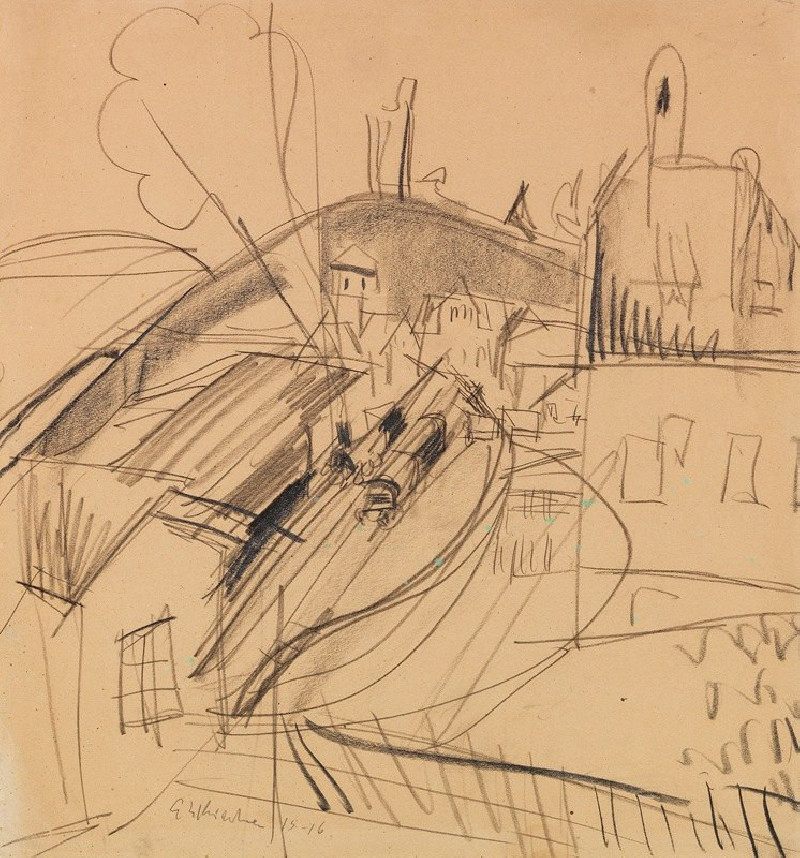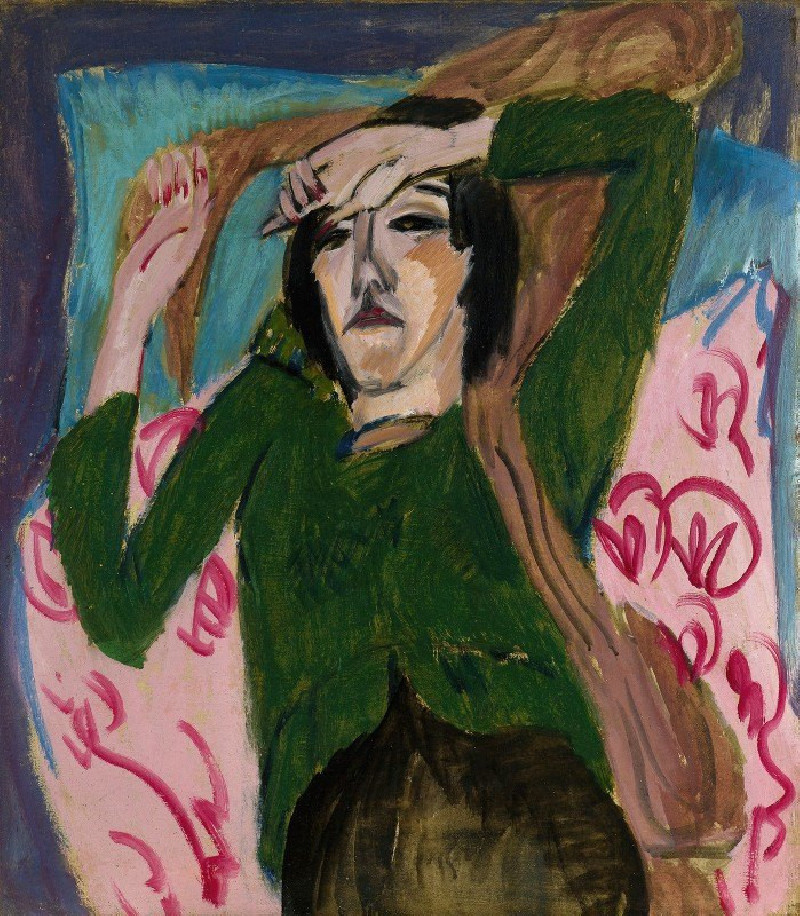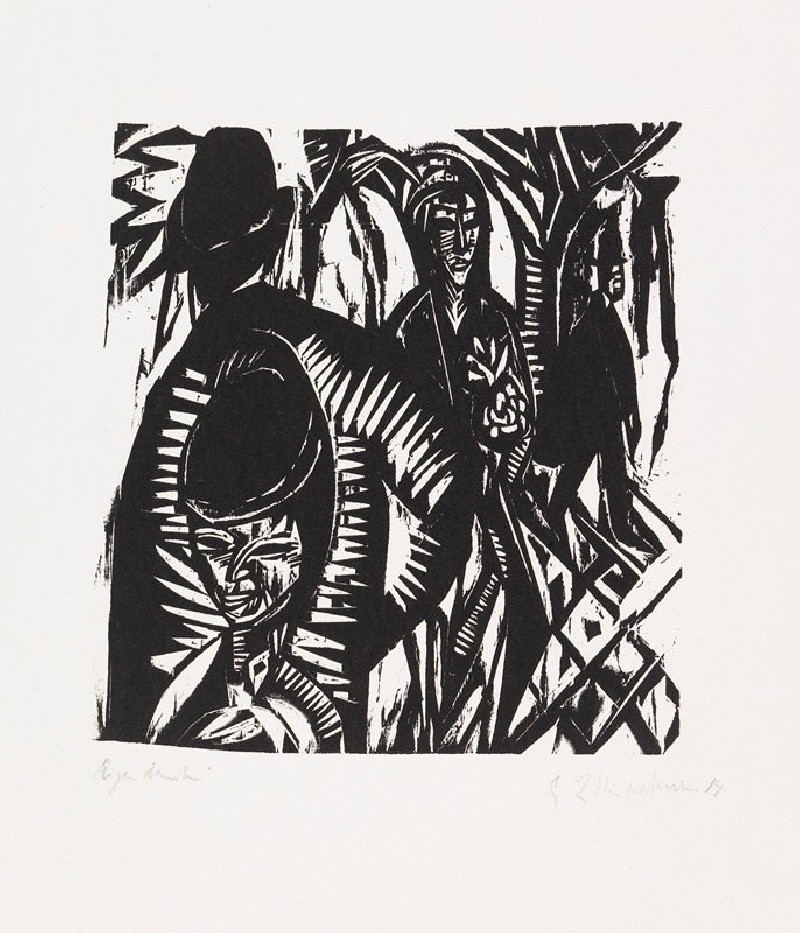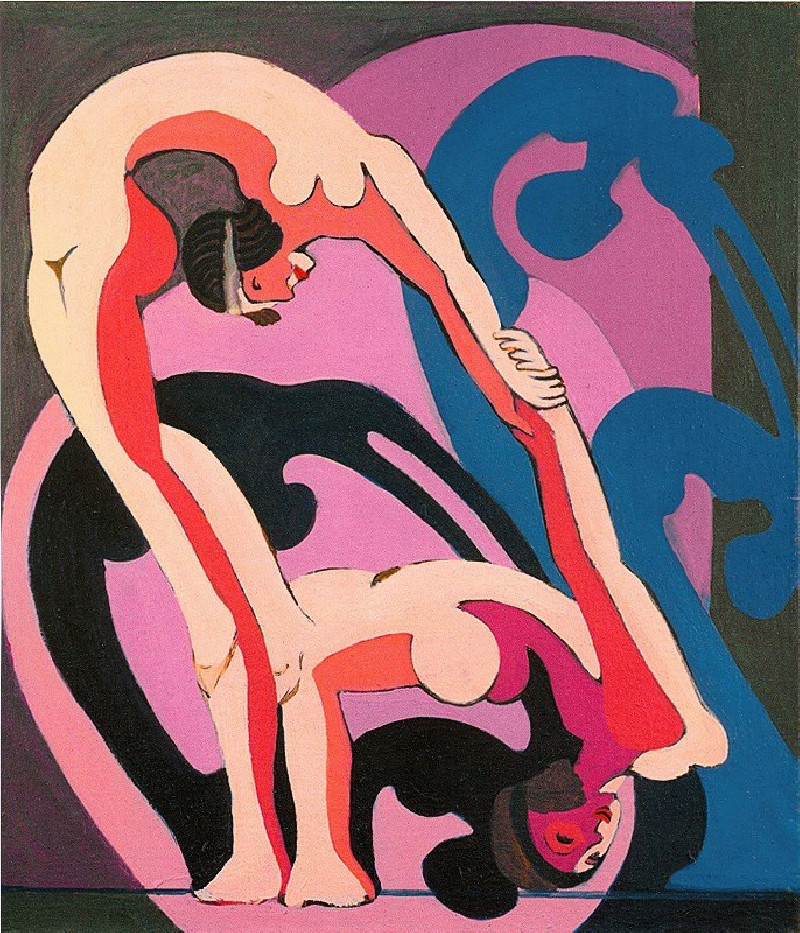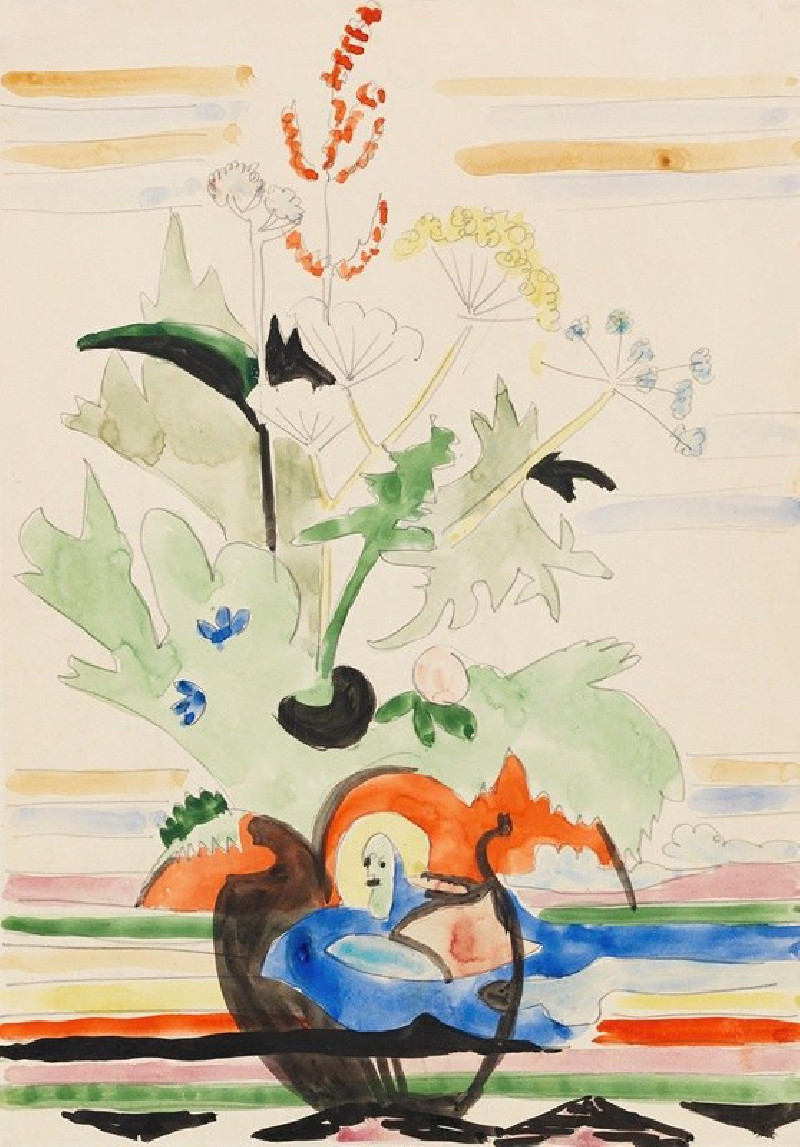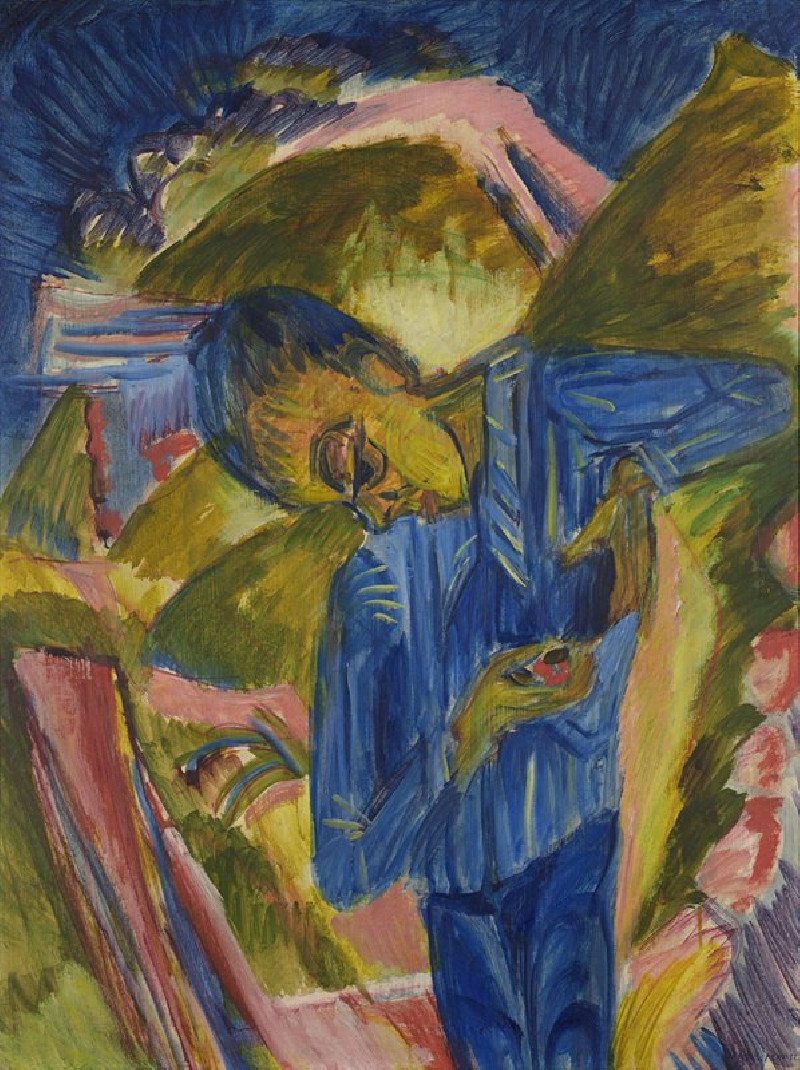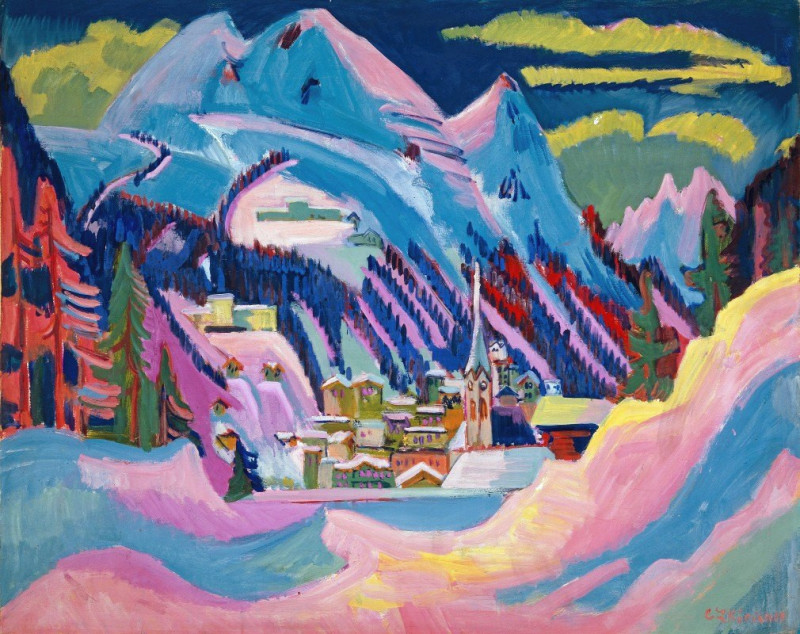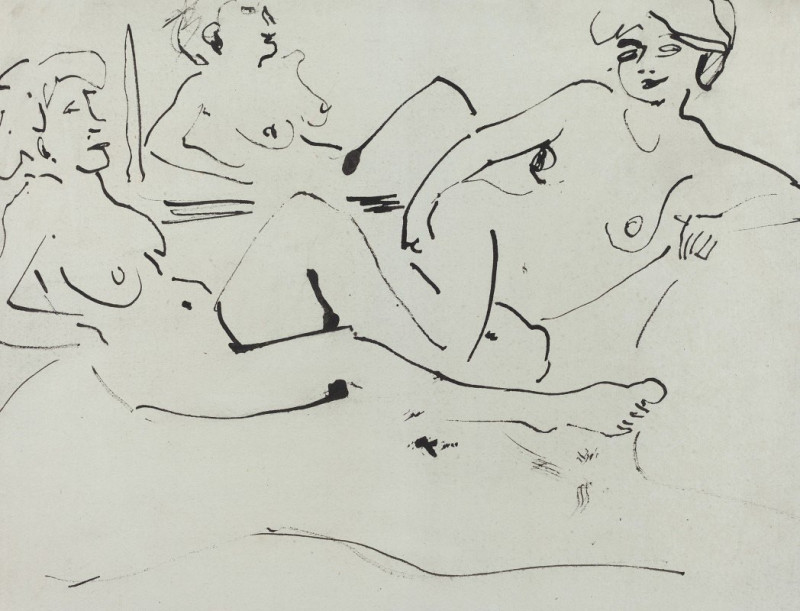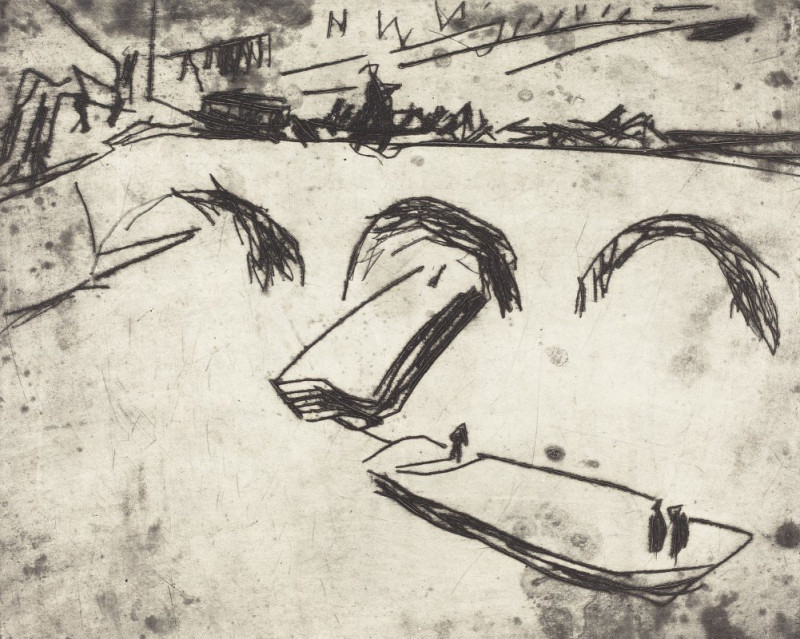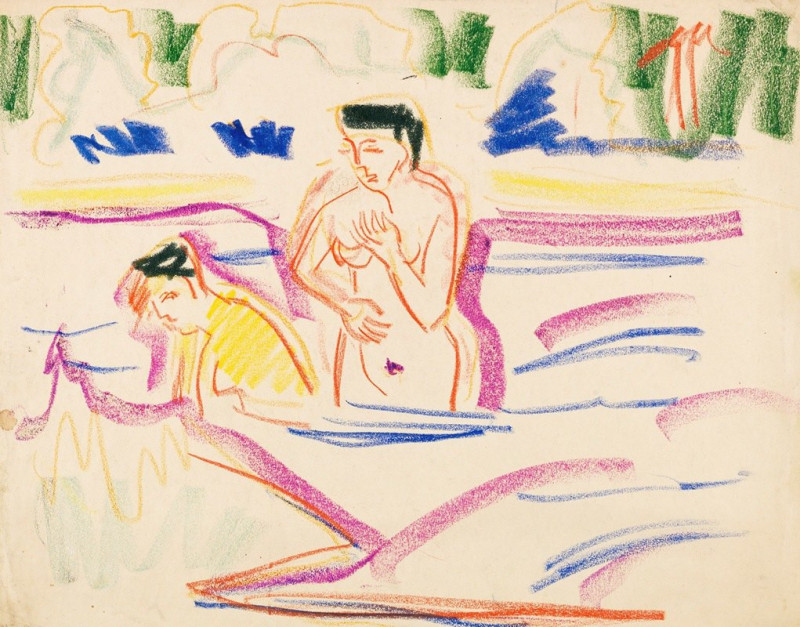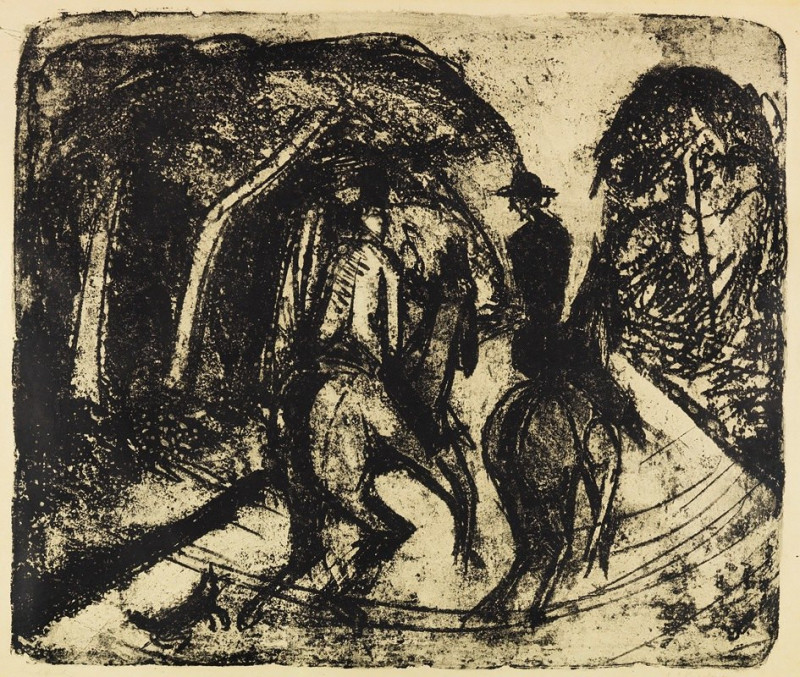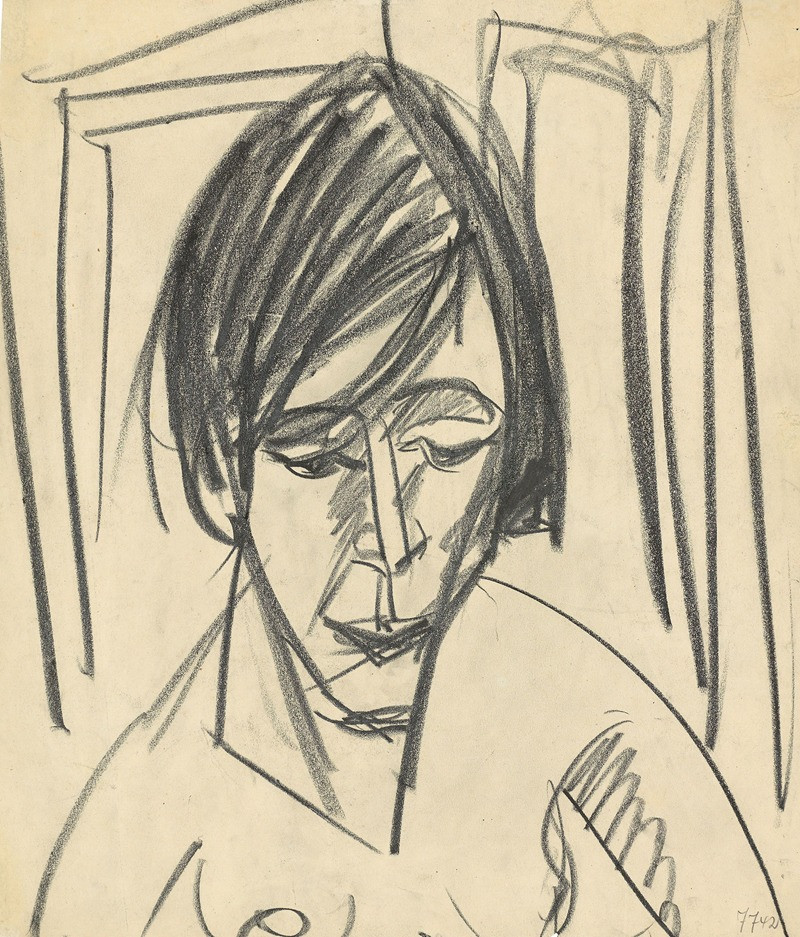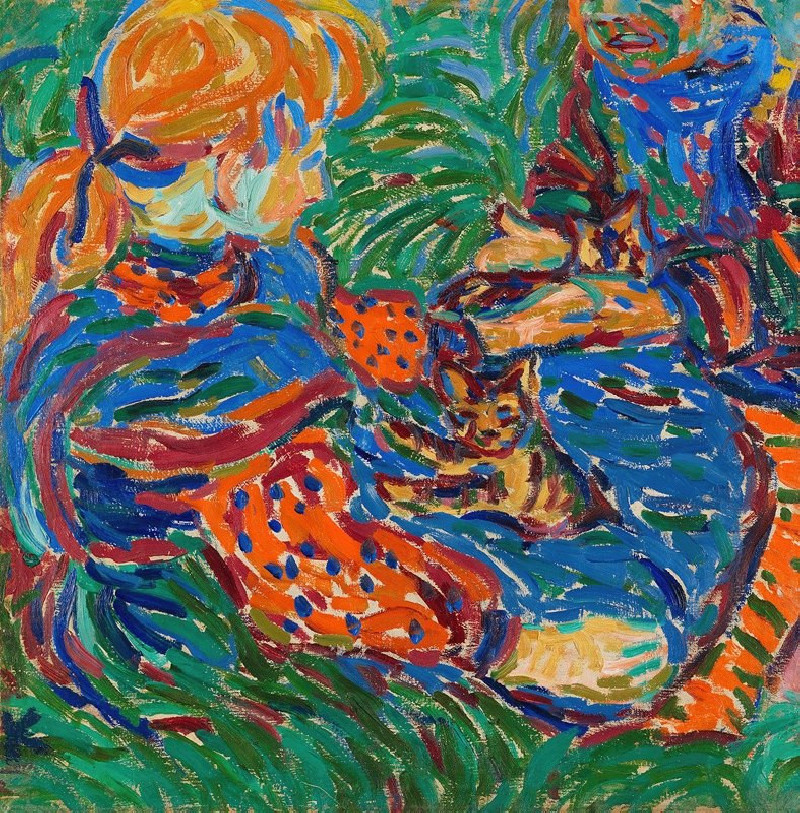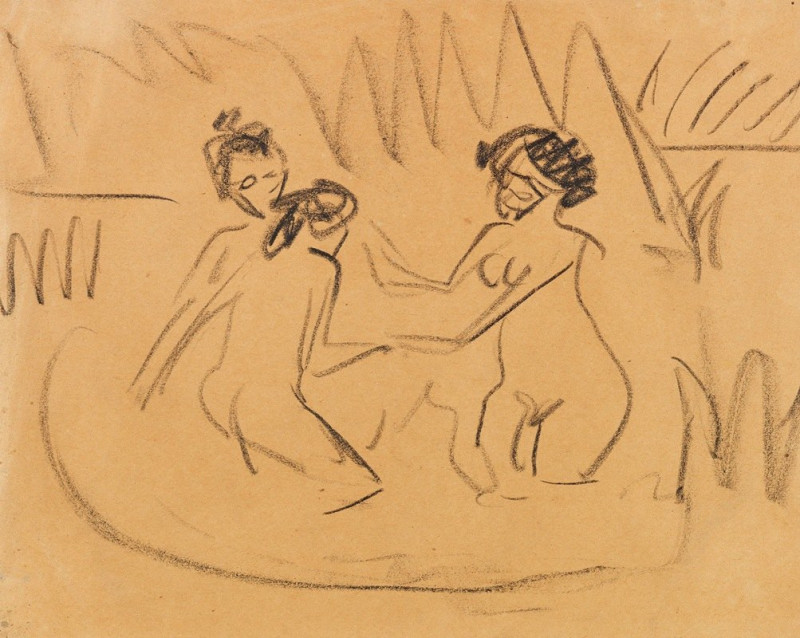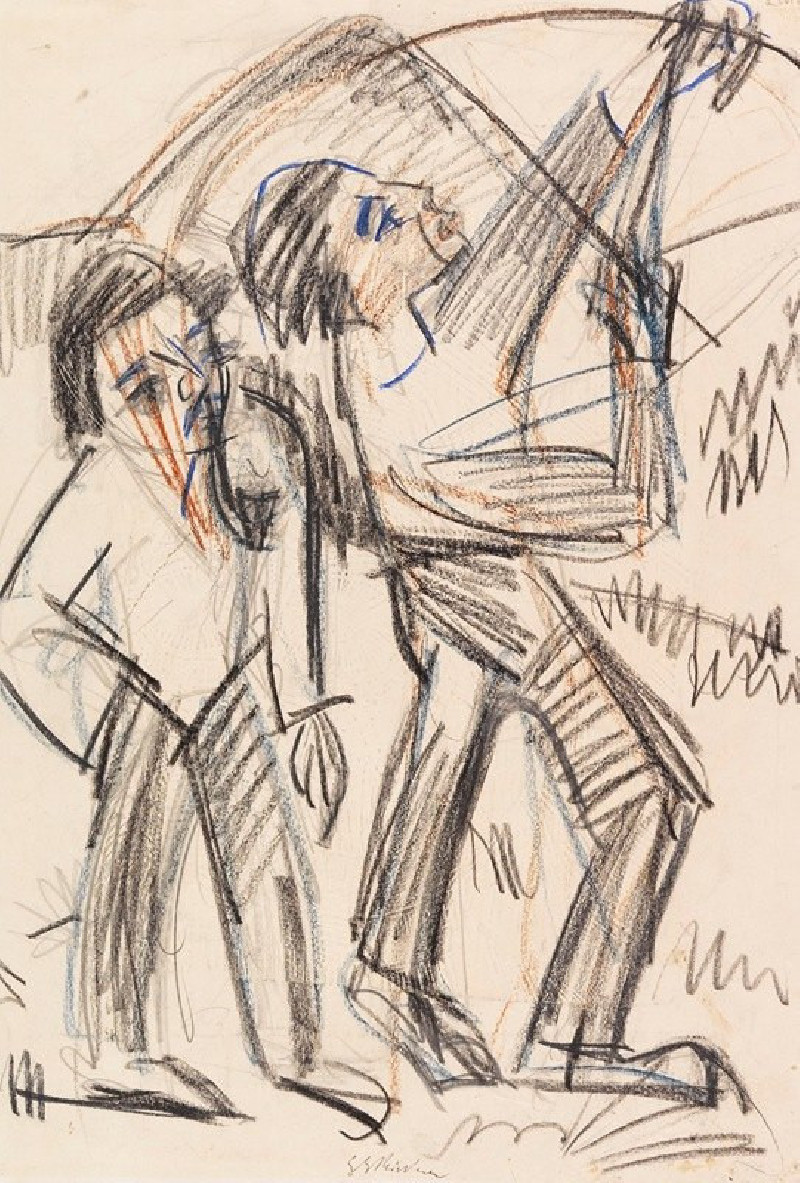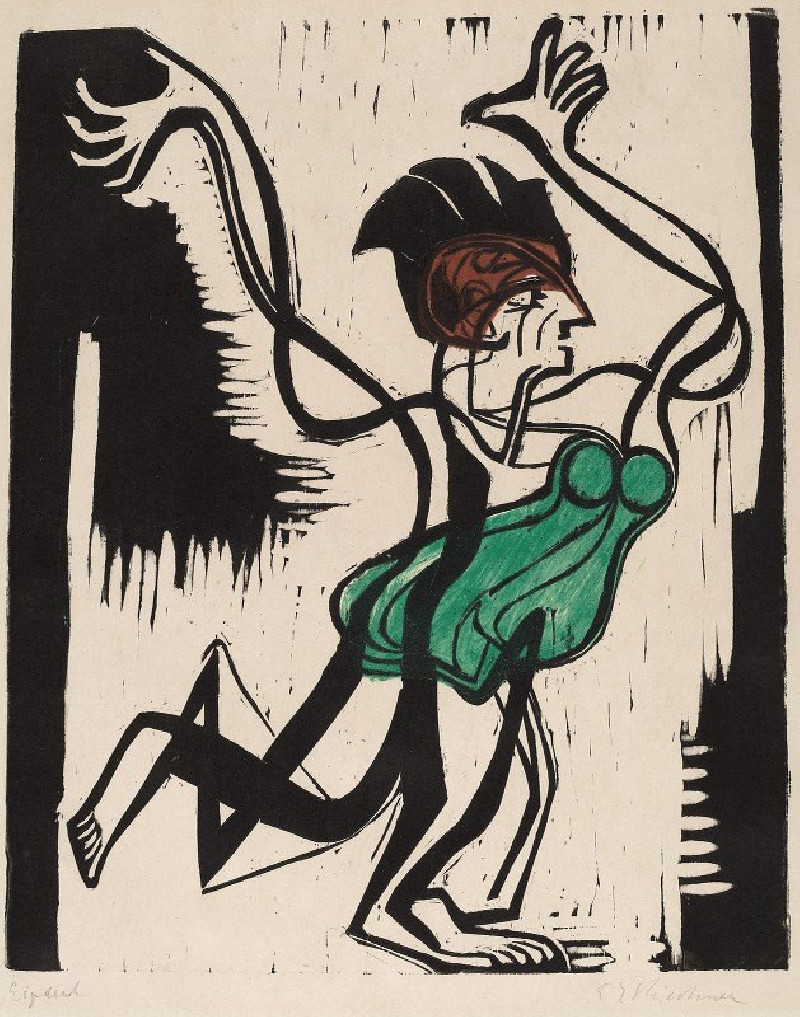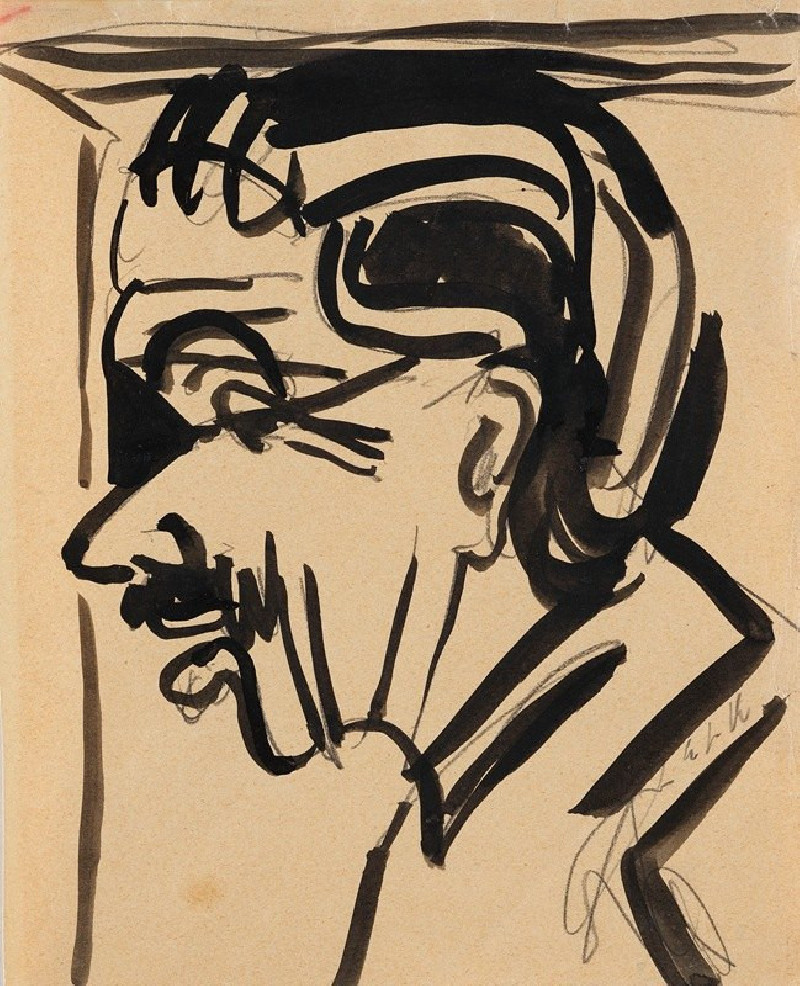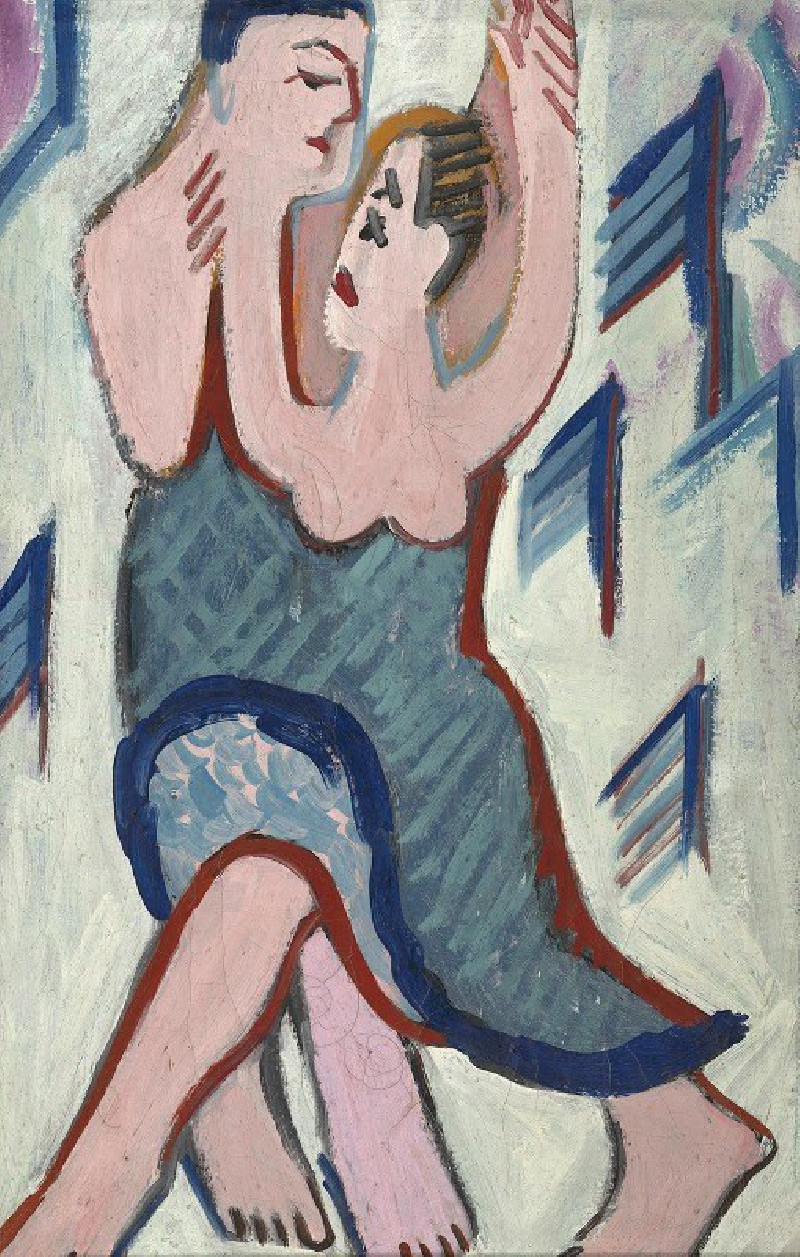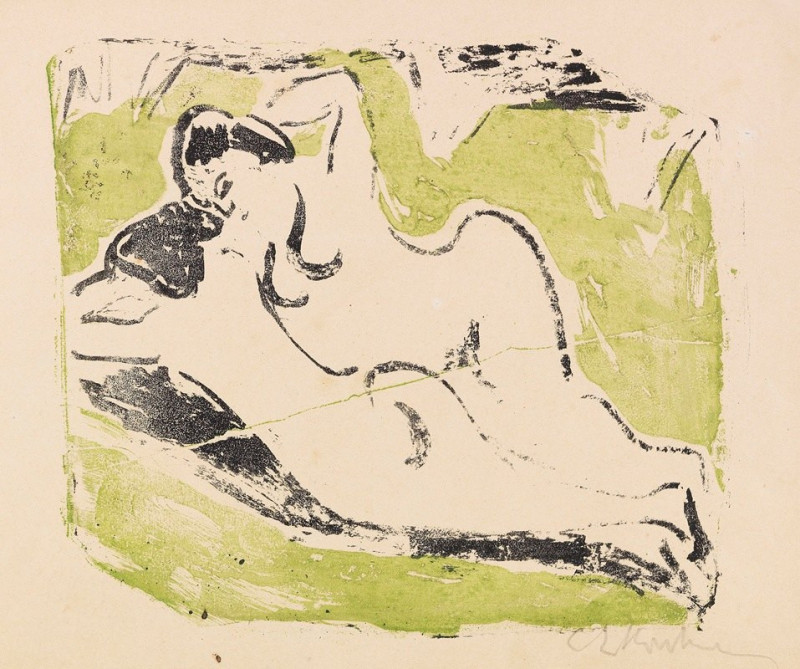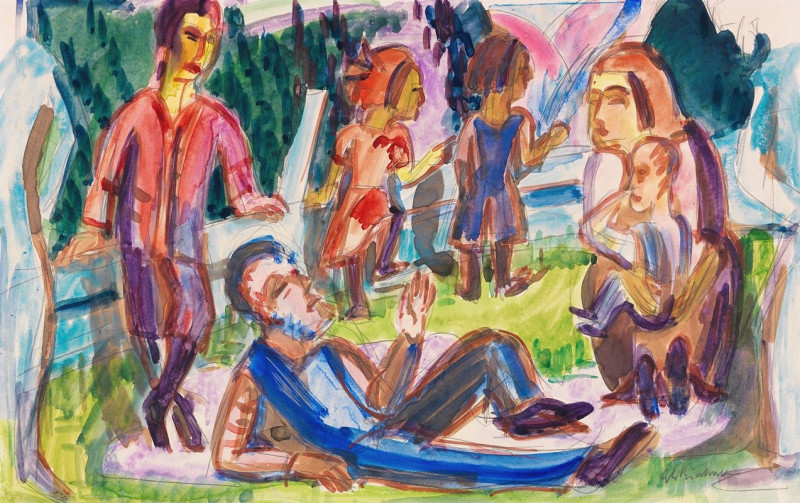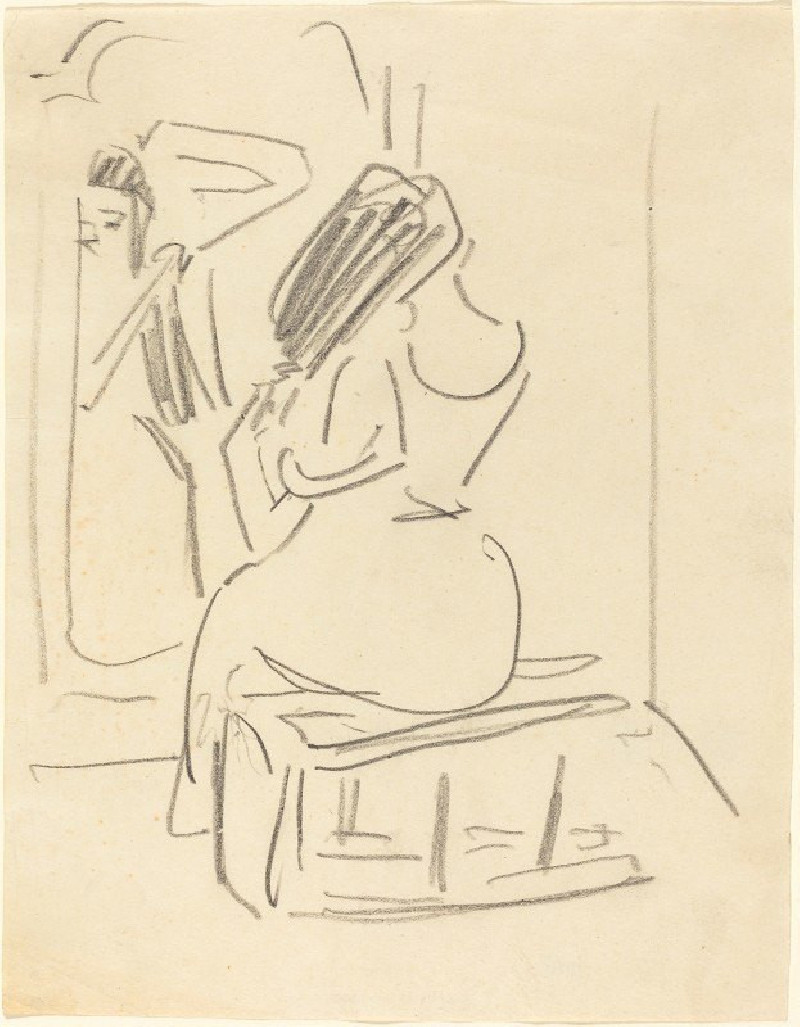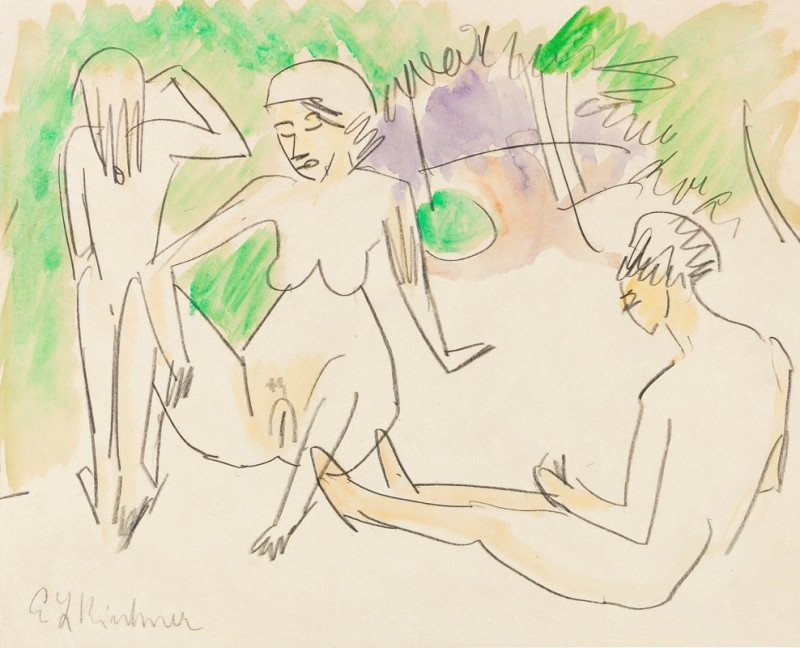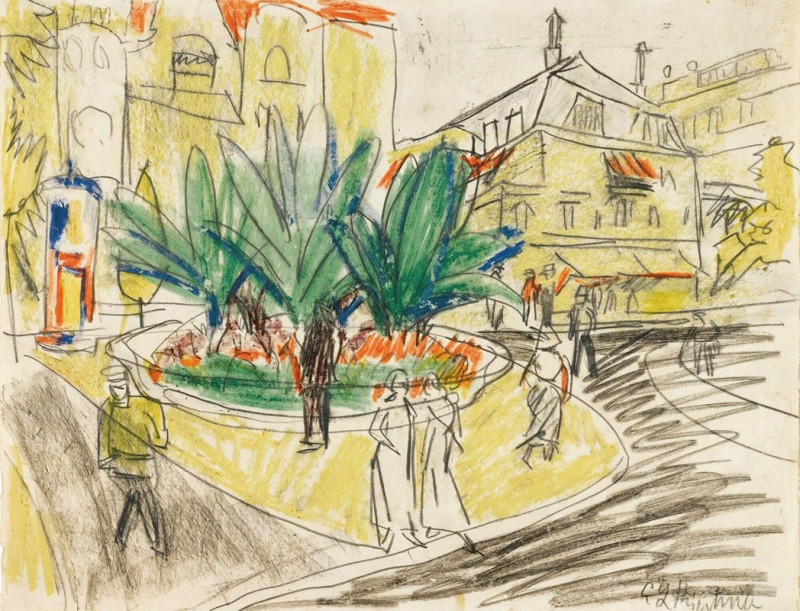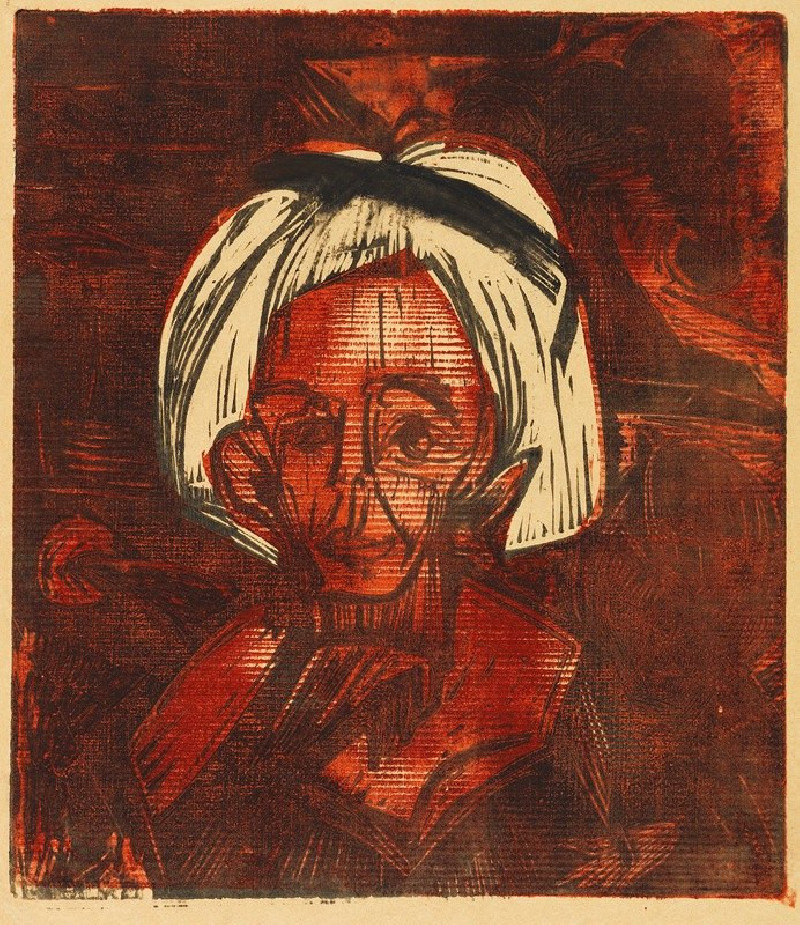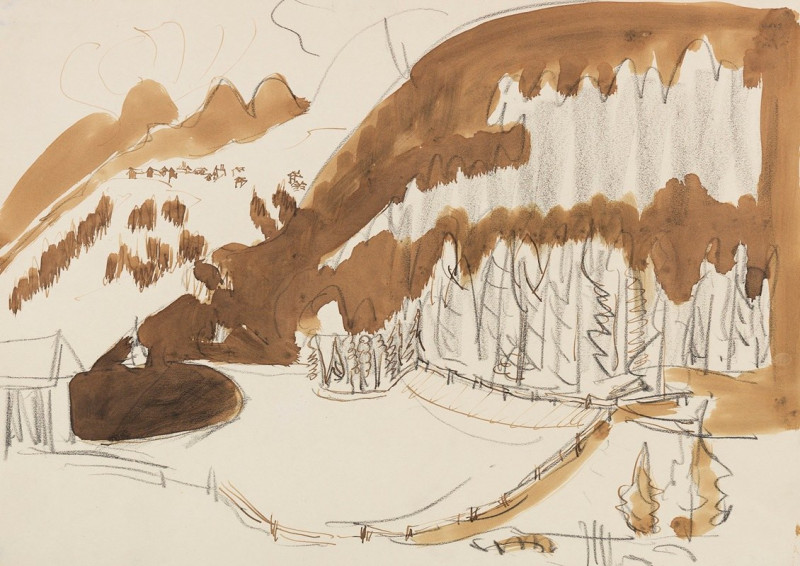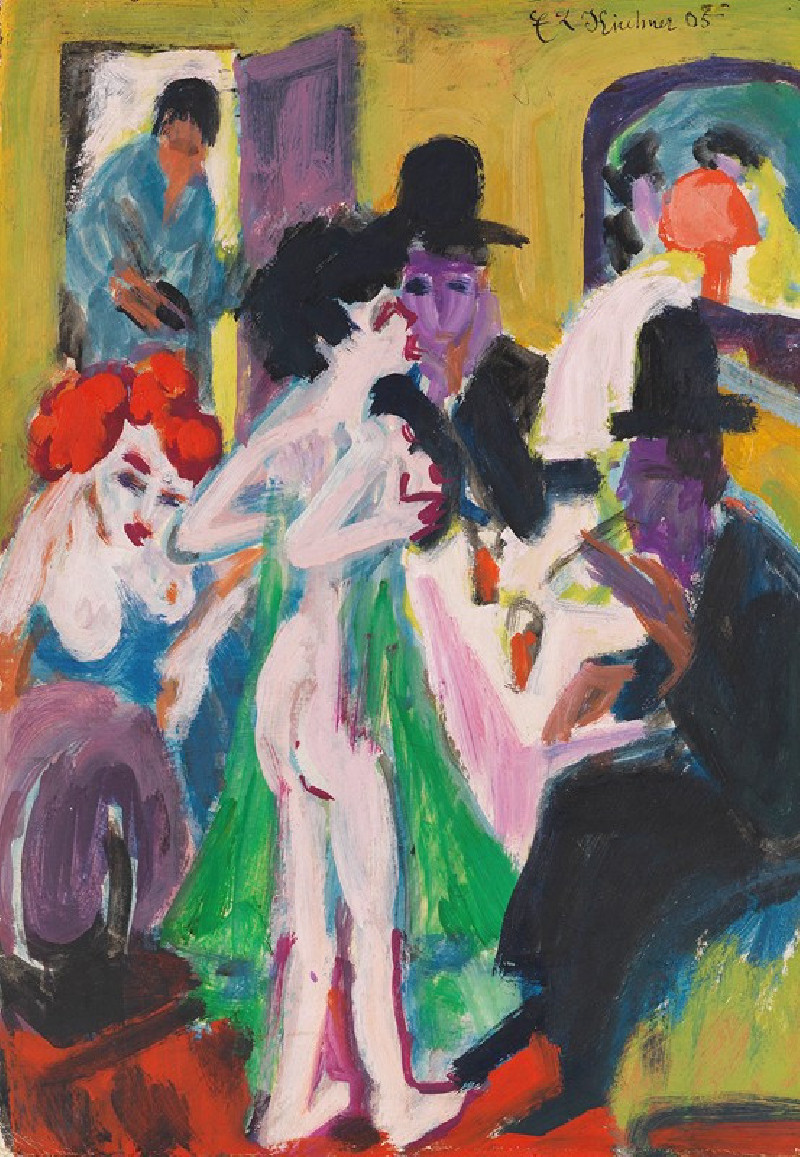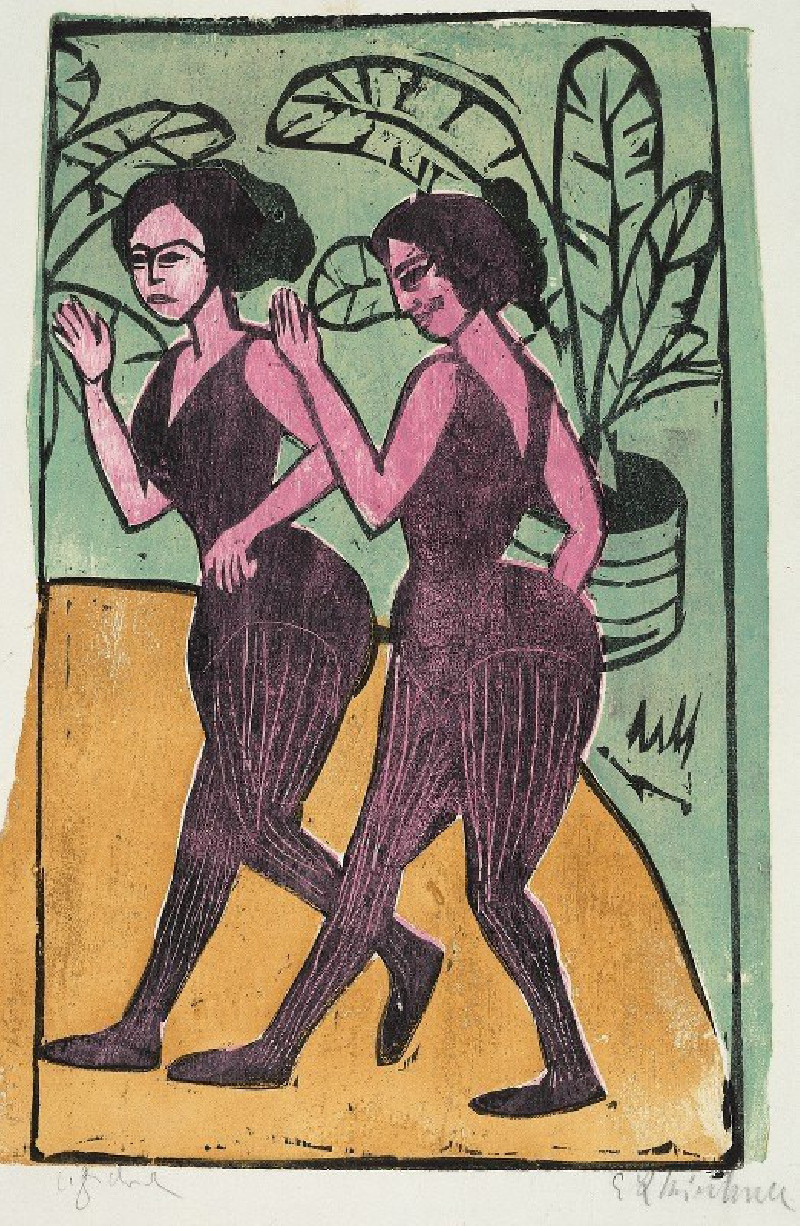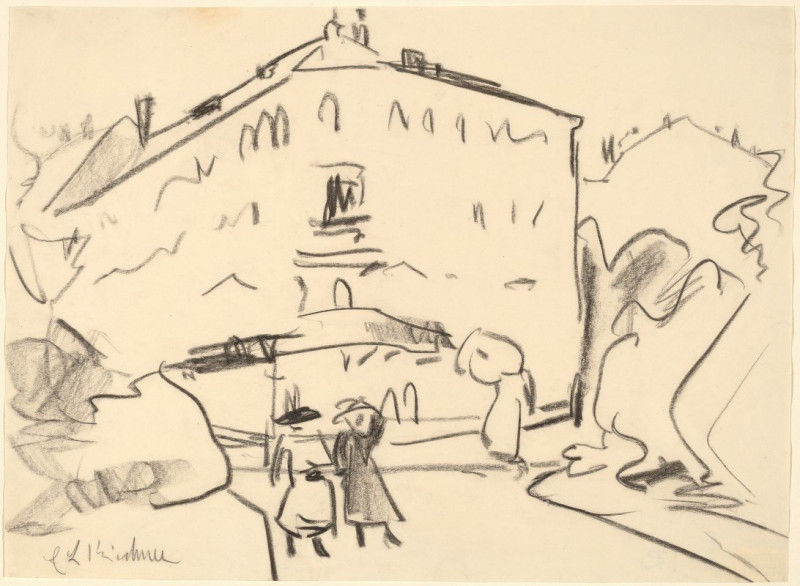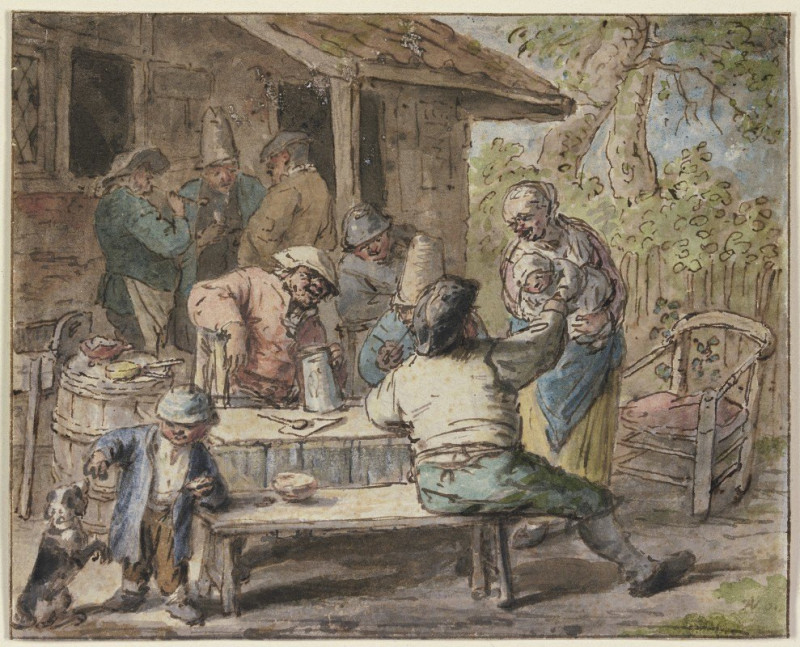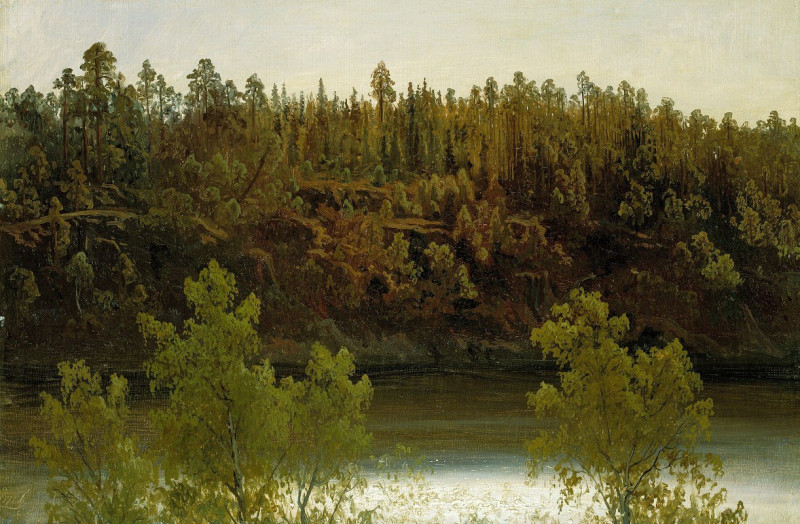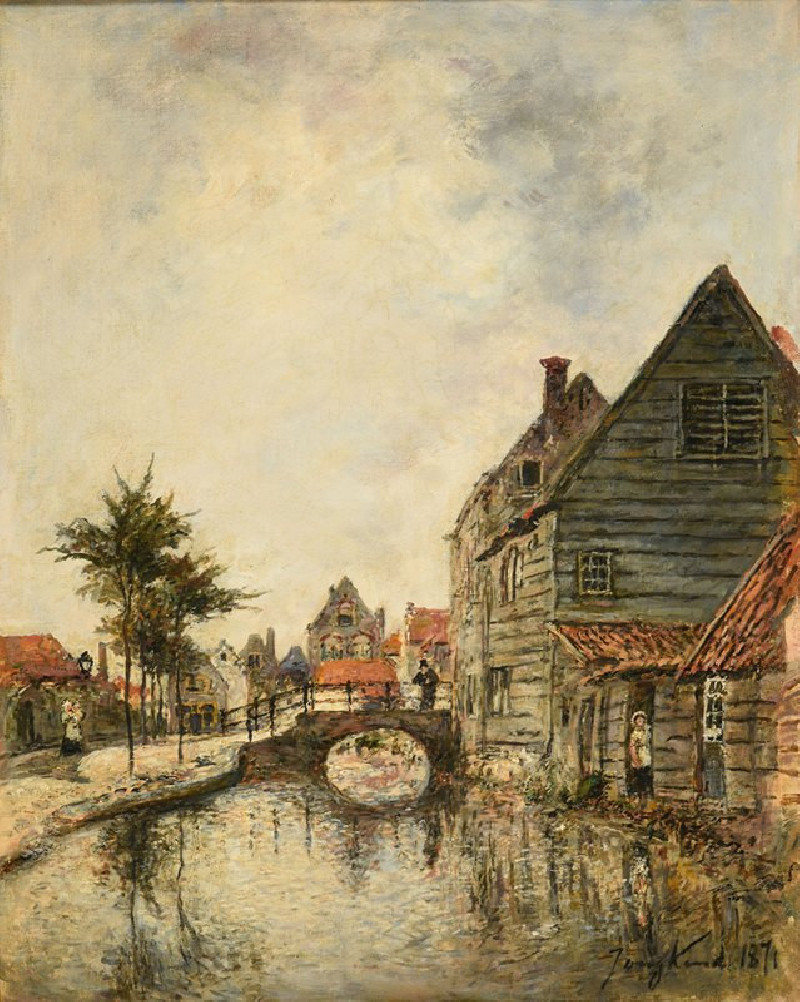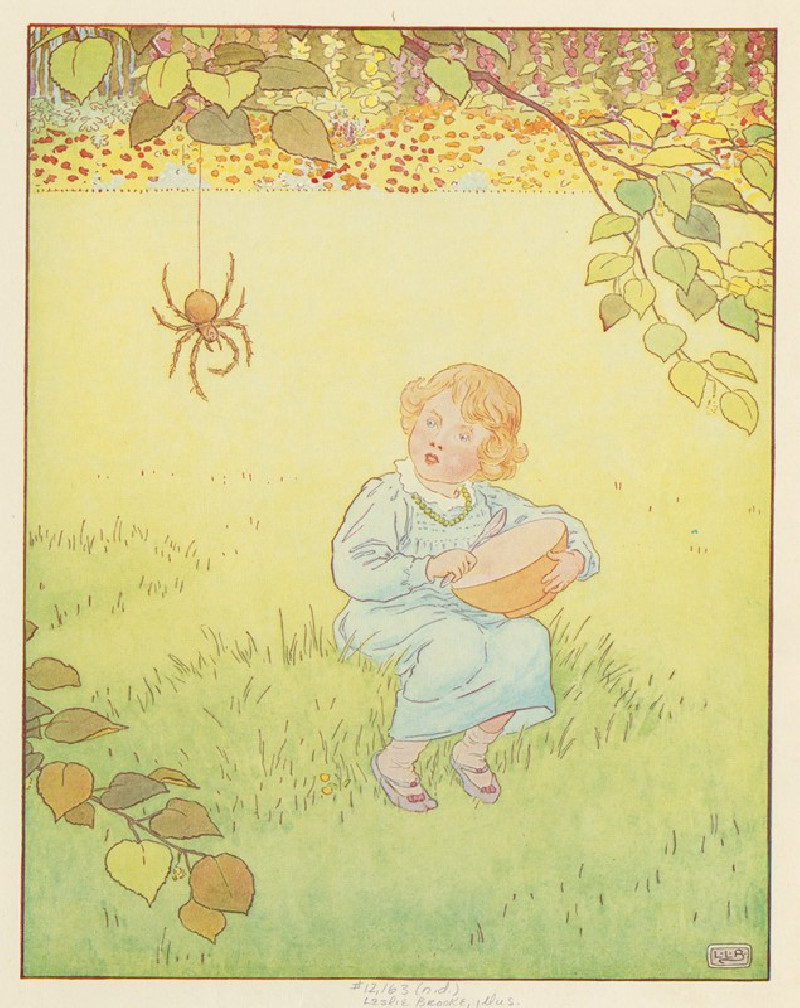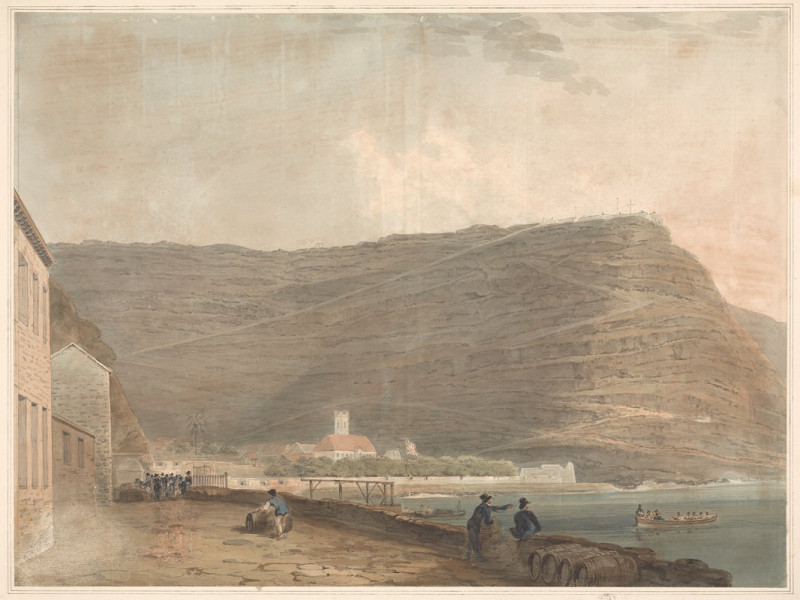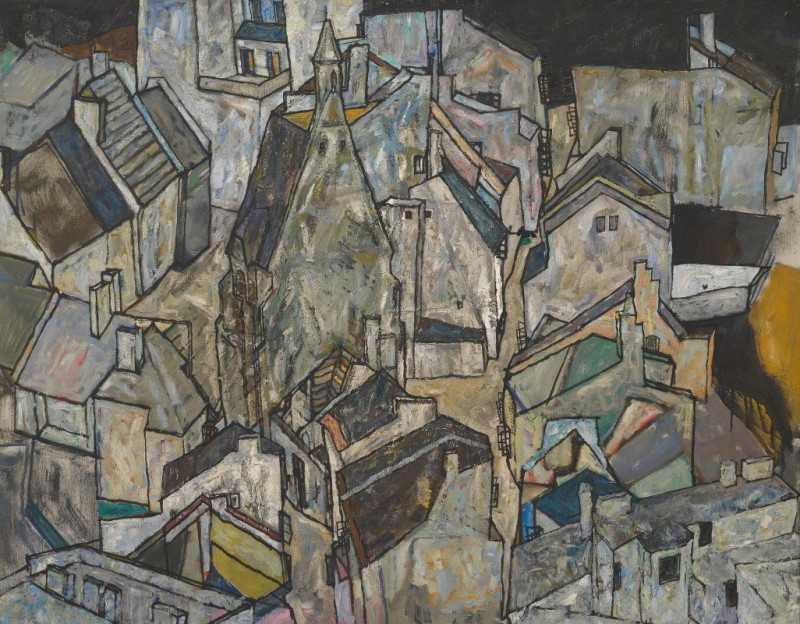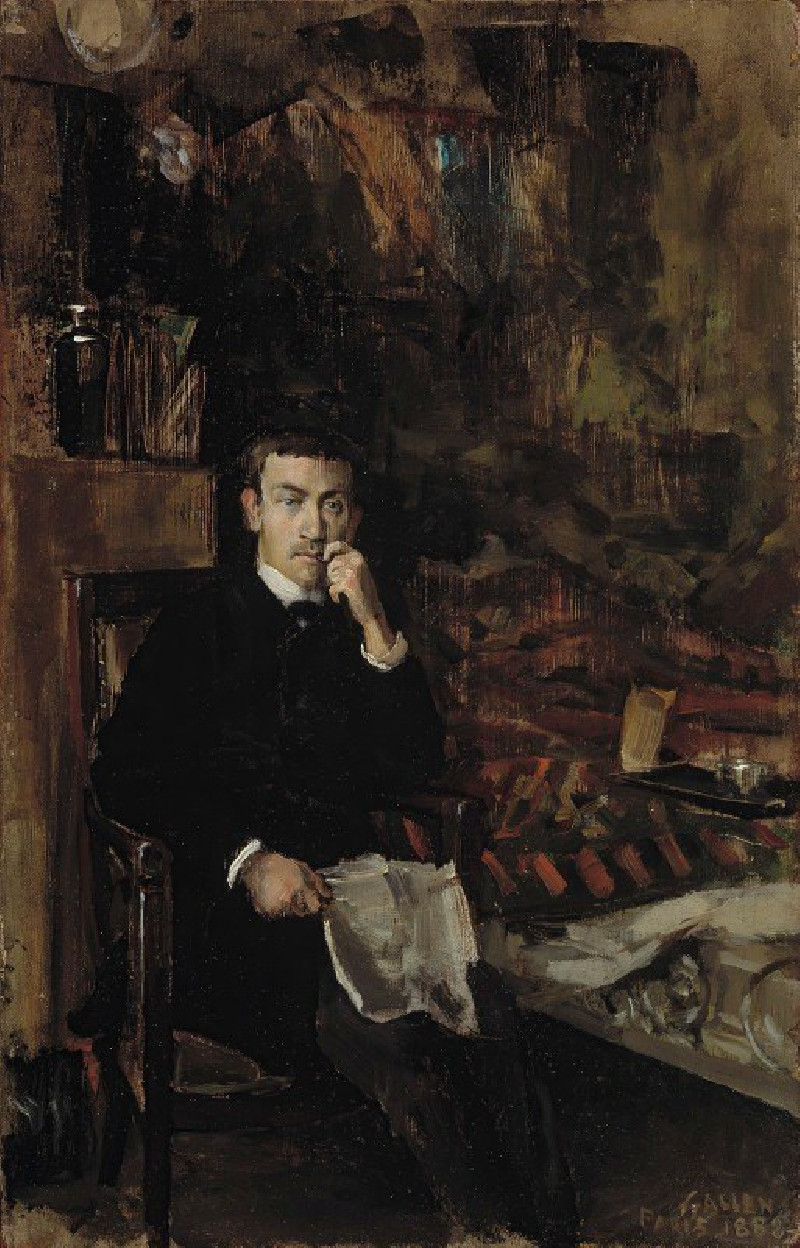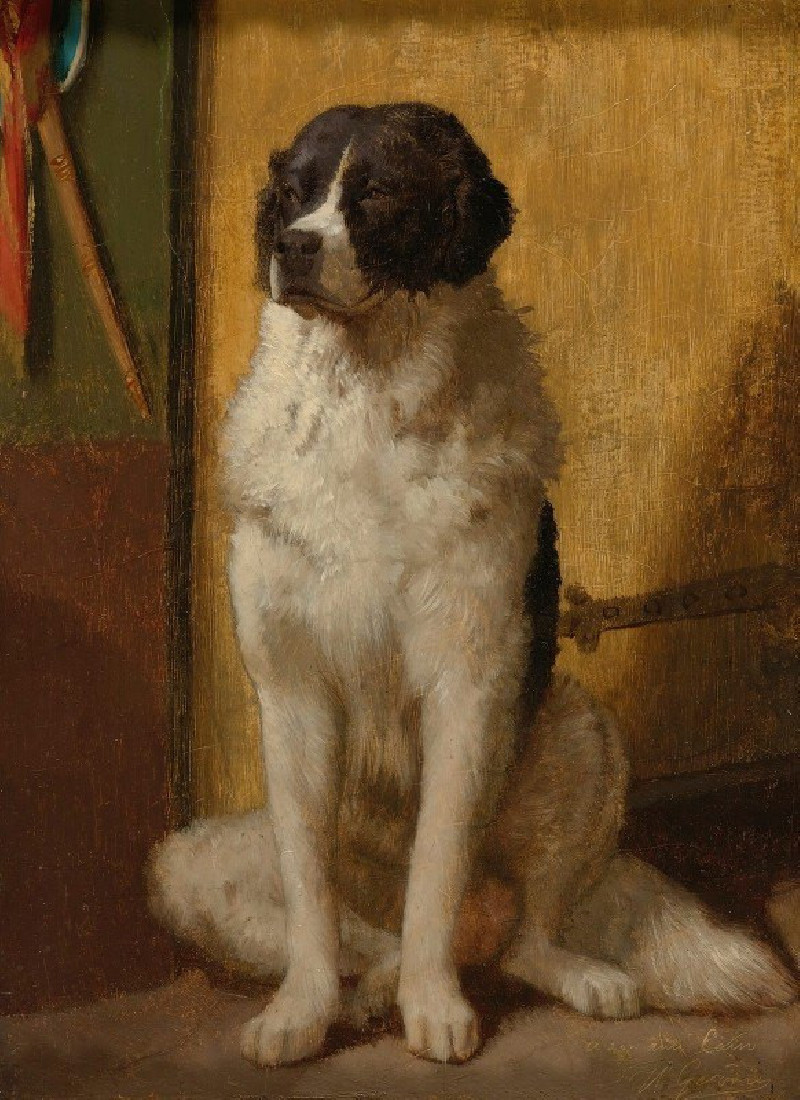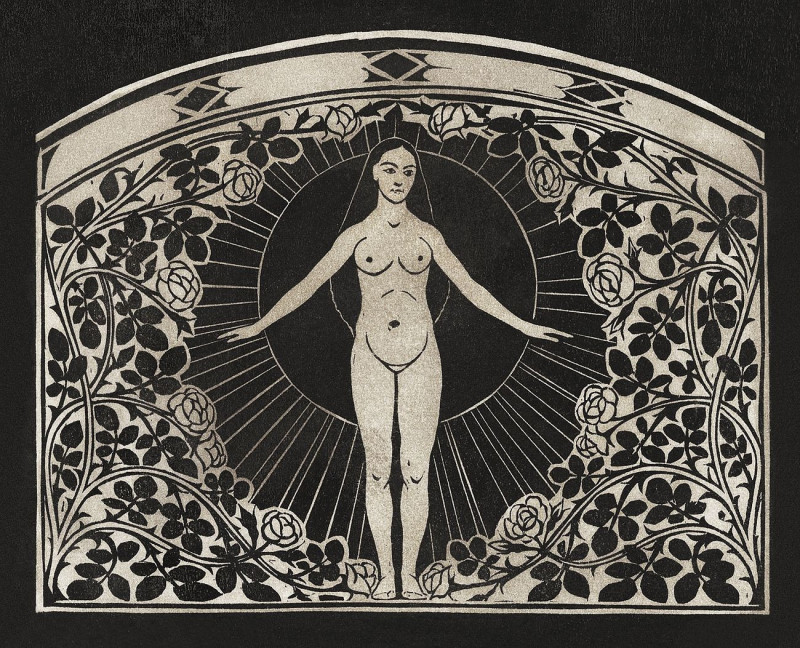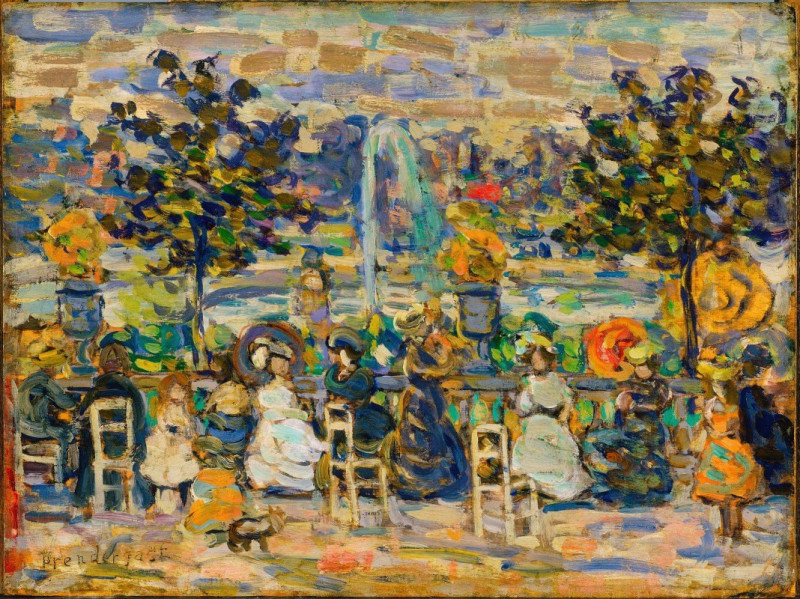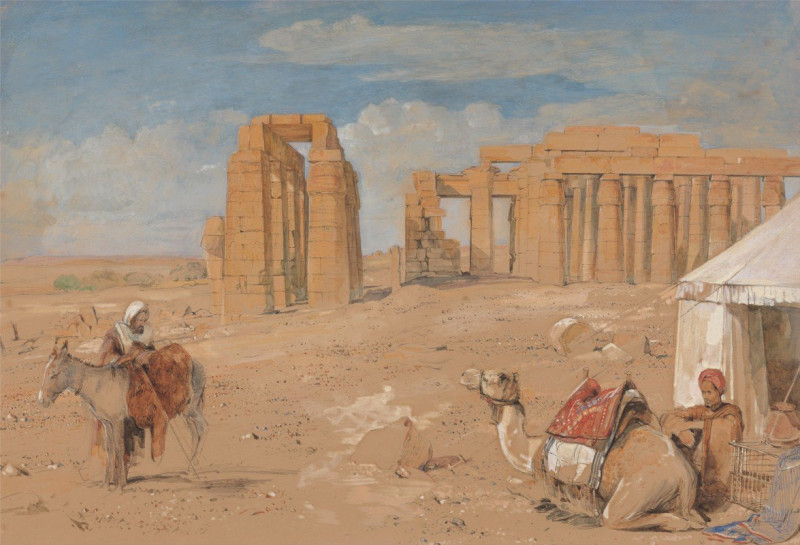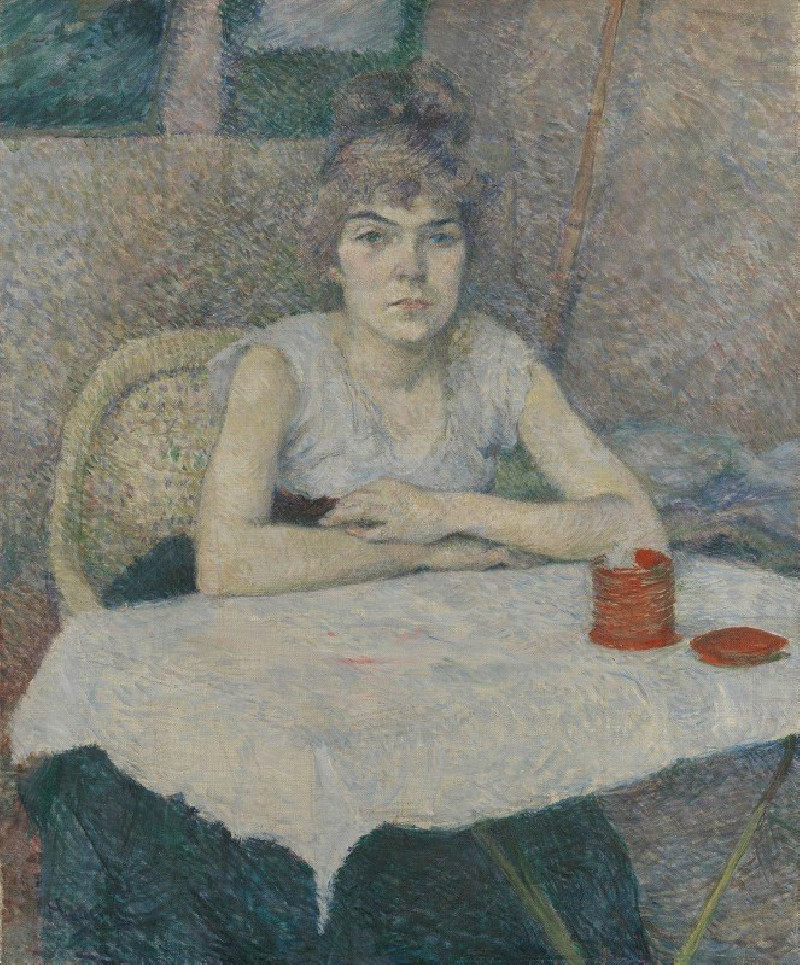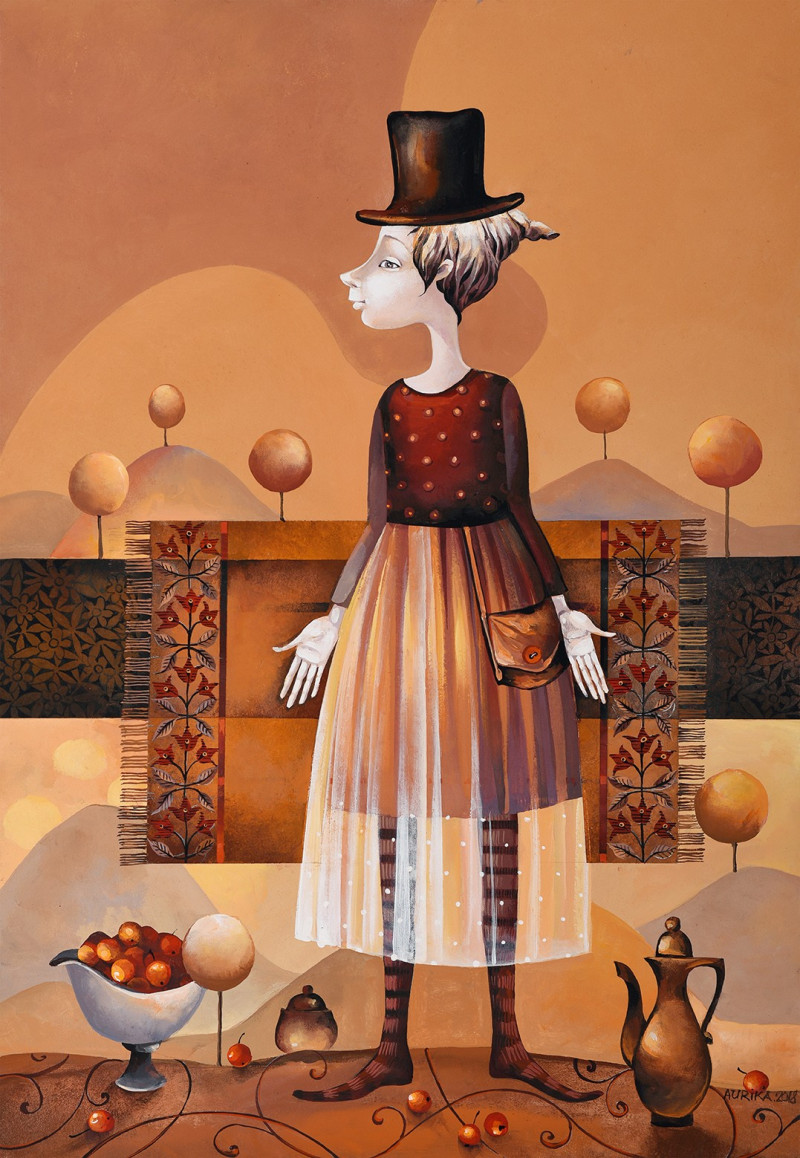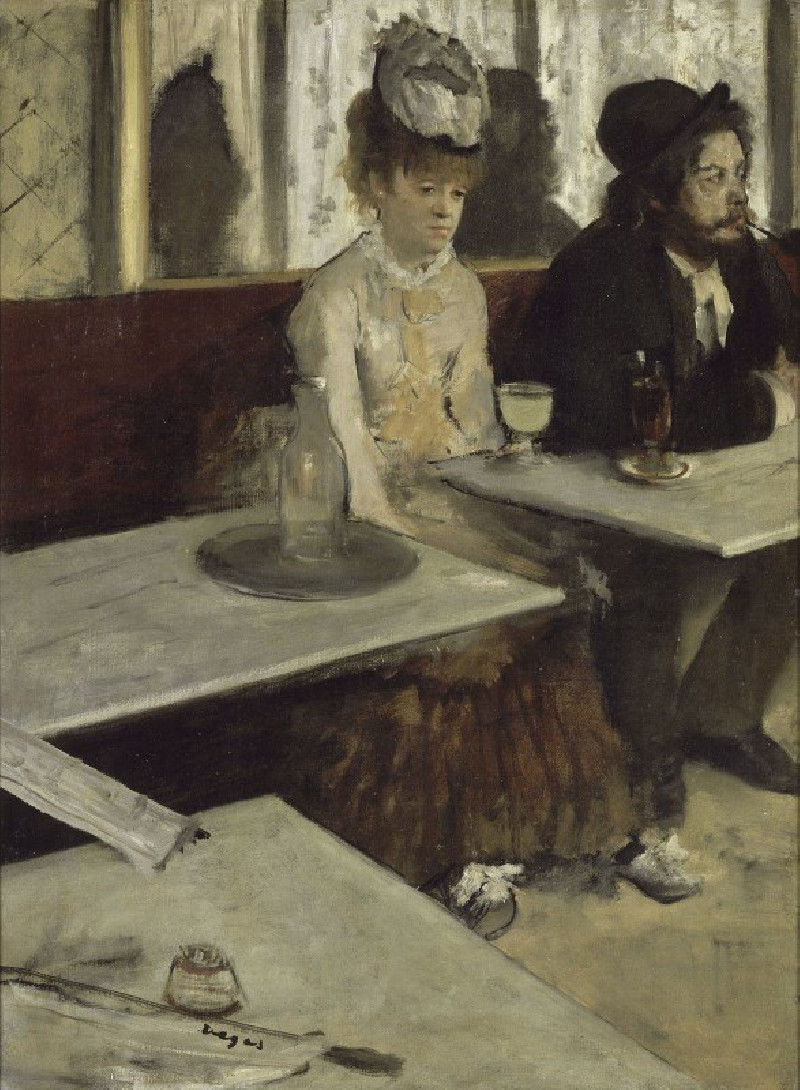Bahnhof Königstein (1915-16)
Technique: Giclée quality print
Recommended by our customers
More about this artwork
We are proud to present a pivotal work by Ernst Ludwig Kirchner, titled "Bahnhof Königstein" from the years 1915-16. This drawing showcases Kirchner's distinctive approach to expressionism, characterized by vigorous, dynamic lines and an engaging abstract style.The artwork portrays the bustling environment of the Königstein railway station, a theme reflecting the modernization of early 20th-century society. The composition is alive with swift, sketchy strokes that capture the essence of motion and urban rhythm. The overlapping forms and angled lines give a sense of depth and movement, drawing viewers into the mechanical and lively scene of the train station.Buildings and smokestacks can be seen in the background, contributing to the industrial feel of the piece. The use of minimalistic detail and the abstract portrayal invite viewers to experience the sense of urgency and the transient moments typical of a train station. Kirchner's work not only captures a specific locale but also echoes the broader expressionist movement's fascination with the modern city's vibrancy and chaotic beauty.
Delivery
Returns
Ernst Ludwig Kirchner (1880–1938) was one of the most important German Expressionist painters. He was a co-founder of Die Brücke, a group of German expressionist artists formed in Dresden in 1905. Die Brücke and Kirchner took inspiration from Vincent Van Gogh and Edvard Munch, as well as African and Oceanic art. They used woodblock printing as a medium to showcase their signature style: flat, unrealistic images with vivid colors. The recurring themes in Kirchner's artworks included exotic cultures, faraway landscapes, self-portraits, dancers and Berlin street life. His paintings and prints effectively portrayed non-European cultures despite the fact that he never traveled outside of Europe.

